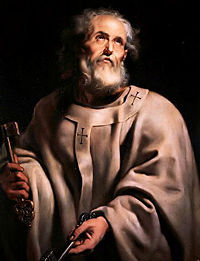A Tale of Two Churches in Belgium
St. Bavo Cathedral and St. Nicholas Church draw visitors in Ghent, Belgium.

Now a laid-back university town, with picturesque canals and plazas, Ghent was medieval Europe’s third-largest city (after Paris and Constantinople), thanks to its bustling cloth industry.
Two ancient churches, each mammoth and magnificent, stand on opposite ends of a square in the city center.
Stunningly imposing and graced with the quiet solemnity that only the passage of centuries can bestow, St. Bavo Cathedral would be worth a visit even without its historic paintings. Its 20 side chapels contain exquisite stained-glass windows and devotional centuries-old paintings. One of the more impressive chapels is dedicated to St. Damien, the Belgian priest who ministered to those with leprosy in isolation in Hawaii.
The expansive, catacomb-like crypt of St. Bavo’s includes remnants of the 12th-century church that once stood here. Centuries of Church artifacts rest behind glass: Bibles, vestments and chalices. The net effect is to grasp the generations of the faithful that have come before and found solace and meaning in the rituals and rites of the Church.
Opposite St. Bavo, somehow almost overshadowed by it, is the venerable, soaring St. Nicholas Church, dating from the 11th century. St. Nicholas is one of the oldest, most prominent landmarks in the city. Its blue-gray stone, imposing tower and slender turrets form an other-worldly presence amid a bustling square.
Displayed inside St. Bavo’s is a painting that stirred souls, revolutionized art and later led the Nazis, convinced of its mystic powers, to hide it in an Austrian salt mine during the bitter battles of World War II.
Adoration of the Mystic Lamb is a massive 24-panel painting focusing on a passage from Revelation about heaven that is read on All Saints’ Day. The central panel shows scores of pilgrims paying homage to the Lamb of God in a glorious meadow.
Jan van Eyck finished the Ghent altarpiece in 1432, and it has left mouths agape at St. Bavo Cathedral since then, save for the times when 16th-century Protestant extremists battered down the church’s doors to burn the painting and it was hidden, when French soldiers spirited it away as war booty for Napoleon in the 18th century, and then, when notorious Nazi Gen. Hermann Goering, a devotee of the occult, had it seized as a supposed treasure trove of clues to the relics of Christ’s passion.
The painting is celebrated for its elaborate thematic content (essentially recounting the story of humanity and our salvation), its incredibly detailed panels and its role as the first great oil painting. Oil was a flexible medium that allowed van Eyck to painstakingly depict subtle details.
"The painting is renowned for how every detail is brilliantly rendered," wrote art historian Thomas Hoving.
The reality shown is the ultimate reality: Christ the King is in the center on top, with a serene Mary to the left, John the Baptist to the right and Adam and Eve in the corners; and, on the bottom half, from left to right, are the Just Judges, the Knights of Christ (including historical figures such as Charlemagne, King Arthur and Julius Caesar), the central adoration panel, the holy hermits and holy pilgrims. The cavalcade of humanity — saints and sinners, popes and bishops, temporal rulers, etc. — turn toward paradise and the Lamb and acknowledge the end of their earthly days and the destiny of humanity.
The painting contains 248 faces, most of them distinctly drawn or given identifiable characteristics, and part of the appeal of the painting is recognizing them. St. Stephen is the one carrying stones in his surplice. The figures of Adam and Eve, staring down at paradise, are particularly memorable. They are far from idealized, rare for that era. Their facial expressions are fully human, not revealing torment or desperation, but a kind of sadness, resignation and even wisdom at the role they played in humanity’s salvation. Adam is stepping out of the frame with his foot, not only an extraordinary three-dimensional artistic feat, but a symbolic representation of forever being a giant step away from paradise.
The masterpiece is mounted behind glass in a chapel of St. Bavo, a Gothic treasure itself that was begun in the 13th century. Forty-minute audio guides are available in seven languages.
One panel of the painting is missing: In 1934, a thief broke into the cathedral and stole the Just Judges panel and then demanded a ransom for it. The crime was never solved, and an expert copy of the panel stands in its place.
St. Bavo’s also displays a Ruebens masterpiece, St. Bavo’s Entry Into the Monastery.
Although Ghent has 24 Catholic parishes, the formidable Romanesque structure of St. Nicholas is fondly called the "city church" for its centrality to the Catholic faithful in Ghent through the centuries. Its interior is stark, cavernous and other-worldly, yet also warm and inviting. The imposing statuary of the Twelve Apostles lining the aisles offer a kind of avuncular welcome.
Jay Copp writes from
La Grange Park, Illinois.
- Keywords:
- April 7-20, 2013
















